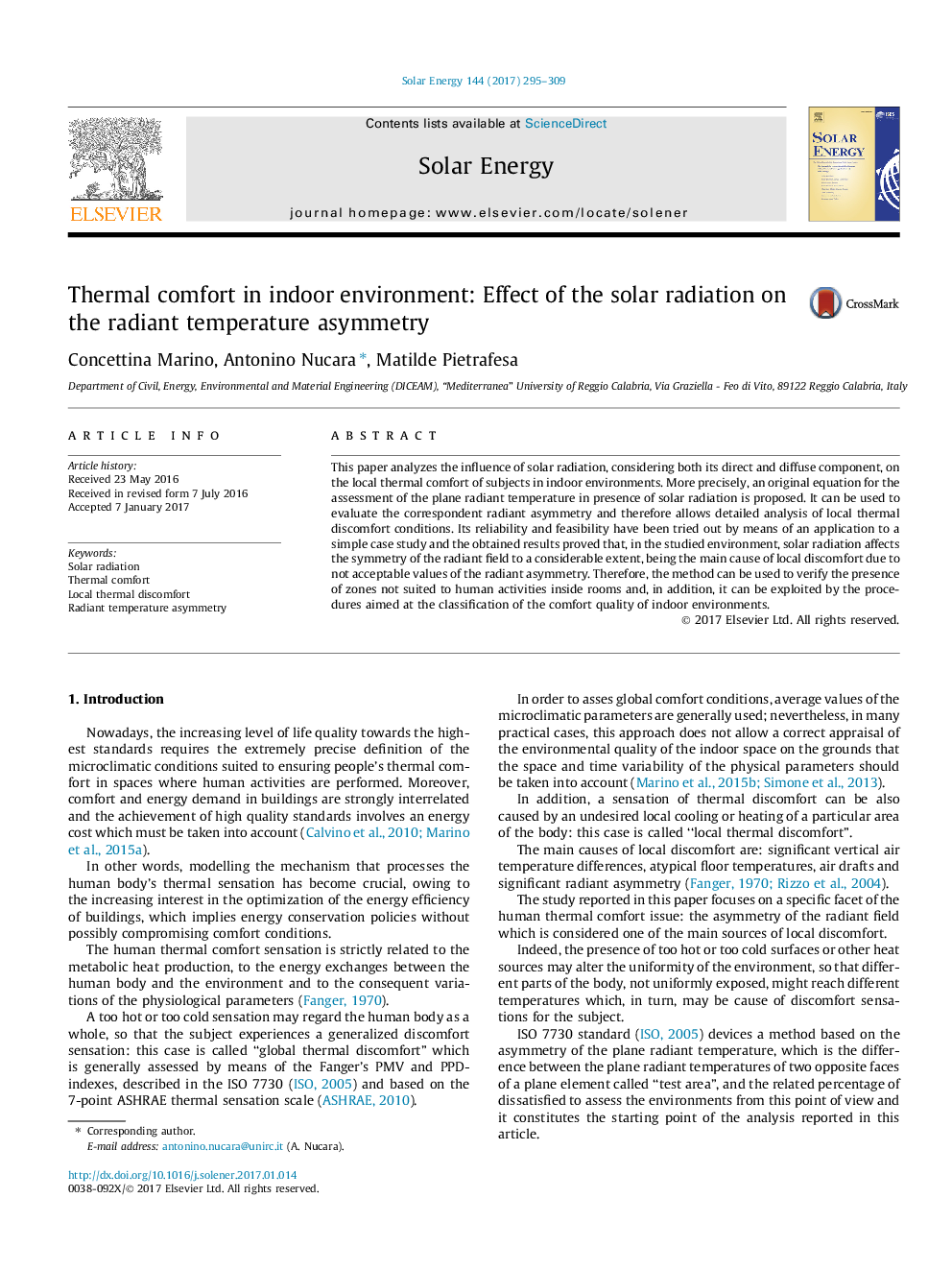ترجمه فارسی عنوان مقاله
راحتی حرارتی در محیط داخلی: اثر تابش خورشیدی بر عدم تقارن دمای تابش
عنوان انگلیسی
Thermal comfort in indoor environment: Effect of the solar radiation on the radiant temperature asymmetry
| کد مقاله | سال انتشار | تعداد صفحات مقاله انگلیسی |
|---|---|---|
| 125814 | 2017 | 15 صفحه PDF |
منبع

Publisher : Elsevier - Science Direct (الزویر - ساینس دایرکت)
Journal : Solar Energy, Volume 144, 1 March 2017, Pages 295-309
ترجمه کلمات کلیدی
تابش خورشیدی، راحتی حرارتی، ناراحتی حرارتی محلی، عدم تقارن دمای تابشی،
کلمات کلیدی انگلیسی
Solar radiation; Thermal comfort; Local thermal discomfort; Radiant temperature asymmetry;
ترجمه چکیده
این مقاله تاثیر تابش خورشیدی را، با توجه به هر دو جزء مستقیم و منتشر آن، بر راحتی حرارتی محلی در محیط محیط داخلی، بررسی می کند. دقیق تر، معادله اصلی برای ارزیابی دمای تابشی هواپیما در حضور تابش خورشیدی پیشنهاد شده است. از این می توان برای ارزیابی عدم تقارن تابشی خبرنگار استفاده کرد و بنابراین اجازه می دهد تا تجزیه و تحلیل دقیق شرایط ناخوشایند گرمایی محلی. قابلیت اطمینان و امکان سنجی آن با استفاده از نرم افزار به یک مورد ساده مورد بررسی قرار گرفته و نتایج به دست آمده ثابت می کنند که در محیط مورد مطالعه، تابش خورشید، تقارن میدان شعاعی را تا حد قابل توجهی تحت تاثیر قرار می دهد، که علت اصلی محلی ناراحتی به دلیل مقادیر قابل قبول عدم تقارن تابشی. بنابراین، این روش می تواند برای بررسی وجود مناطق که برای فعالیت های انسانی در داخل اتاق مناسب نیست، علاوه بر این، می تواند توسط روش هایی برای طبقه بندی کیفیت راحتی محیط های داخلی مورد استفاده قرار گیرد.

